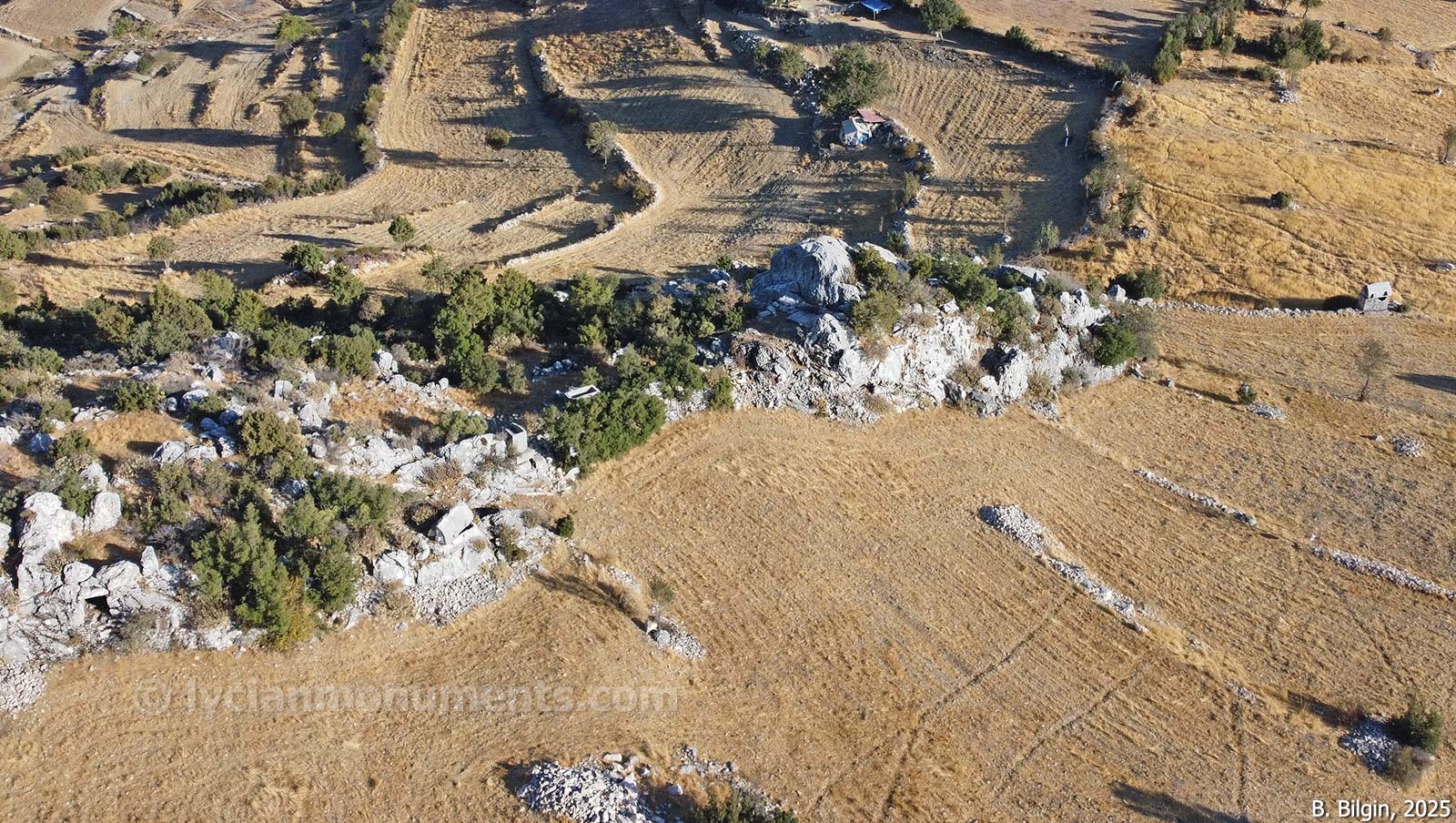Platane is a small settlement located on the mountain road from Tlos to Girdev. It is referred to as “Plata[…]” on the Patara Road Monument, on the route from Tlos to Oinoanda. The full name is thought to have been either Platane or Platasa. Apart from its city walls, most of the surviving structures belong to the necropolis, consisting of sarcophagi and rock-cut tombs. The area is locally known as Köristan, a term associated with cemeteries, due to the dominance of burial structures.
The acropolis and surrounding walls exhibit characteristics from the Dynastic and Hellenistic periods. Today, the remains on the acropolis hill are almost entirely concealed beneath dense forest vegetation. In the necropolis, located on the southeastern slope and the facing rocky hill, there are Lycian sarcophagi with ogival lids, along with a few arcosolia and rock-cut tombs. Additionally, remains of several podium tombs can be found to the south of the acropolis. The most distinguished tomb in the city is a heroon situated on the western slope.
References:
Çevik, N. 2021. Lykia Kitabı: Arkeolojisi, Tarihi ve Kültürüyle Batı Antalya, Türk Tarih Kurumu, Ankara.
Korkut, T. 2015. Arkeoloji, Epigrafi, Jeoloji, Doğal ve Kültürel Peyzaj Yapısıyla Tlos Antik Kenti ve Teritoryumu, Seydikemer Kaymakamlığı Yayınları 1, Ankara.
Image Sources:
T. Korkut, 2015
Bora Bilgin, 2025
Tayfun Bilgin, 2025
Reha Özer, 2025






